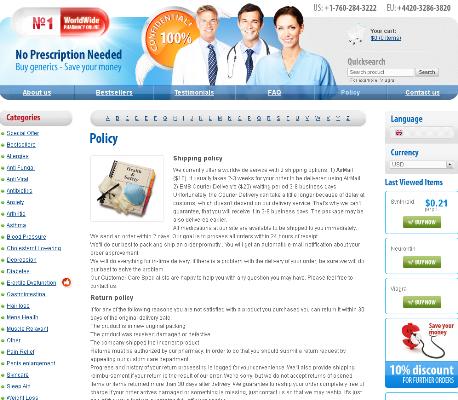How Cephalexin Tackles Bacterial Skin Infections
When a bacterial skin infection strikes, cephalexin springs into action by targeting the root cause—harmful bacteria causing redness, swelling, and pain. This antibiotic belongs to the cephalosporin family, making it especially effective at disrupting the bacterial cell wall. Without a strong cell wall, bacteria can’t survive or multiply, leading to a decline in infection.
Cephalexin works against many common culprits, including Staphylococcus and Streptococcus species. These are frequent offenders in conditions like cellulitis and infected cuts.
Since cephalexin specifically attacks bacteria, it doesn't impact viruses or fungi. This targeted approach helps clear up infections faster and supports healthy, healing skin.
| Action | Target | Result |
|---|---|---|
| Disrupts bacterial cell walls | Staphylococcus, Streptococcus | Bacterial death, reduced infection |
Most Common Skin Conditions Treated with Cephalexin

Doctors frequently prescribe cephalexin to tackle impetigo, a contagious skin infection marked by red sores and blisters, commonly seen in children. Cellulitis, another frequent culprit involving deeper skin layers, also responds well to this antibiotic. Both conditions can cause significant discomfort if left untreated.
Folliculitis, where hair follicles become inflamed due to bacteria, is another scenario where cephalexin demonstrates its effectiveness. This medication works by disrupting the structure of bacterial cell walls, leading to their destruction and a reduction in symptoms.
Additionally, cephalexin is sometimes used for treating infected wounds or abscesses that develop after minor trauma. Its broad-spectrum activity makes it a trusted choice for various bacterial skin issues.
How Quickly Does Cephalexin Start Working?
For many patients, feeling the first signs of relief is a crucial milestone when taking an antibiotic like cephalexin. Typically, initial improvements such as reduced redness, pain, or swelling are noticed within 48 to 72 hours after starting the medication. This timeframe varies from person to person, depending on the severity of the infection and individual health factors.
It’s important not to expect instant results; the bacteria need time to respond and begin dying off. Some people may start to feel better sooner, while others might need a bit longer before they notice significant changes. Patience and consistency are key for maximum benefit.
Even if symptoms improve quickly, completing the prescribed course ensures all bacteria are eliminated. Stopping cephalexin too soon can lead to incomplete treatment and potential recurrence of the infection.
If there’s little to no improvement after several days, consult your healthcare provider. This could mean the infection isn’t responding as expected, and a different treatment plan may be needed.
Cephalexin Side Effects: What Should You Expect?

While cephalexin is generally well-tolerated, most users should be aware of the possible side effects that can arise during treatment. Mild reactions like stomach upset, nausea, and diarrhea are among the most frequently reported issues, often resolving without intervention. Occasionally, individuals may experience headaches or dizziness, so it’s wise to avoid activities that require full mental alertness until you know how the medication affects you.
In rare instances, more concerning side effects may develop, such as allergic reactions characterized by rash, itching, swelling, or difficulty breathing. Anyone experiencing these symptoms should seek immediate medical attention. It’s also important to inform your healthcare provider about any history of allergy to antibiotics, as cephalexin shares similarities with other drugs in the cephalosporin family and may not be suitable for everyone.
Situations Where Cephalexin May Not Be Effective
While cephalexin is a reliable choice for many skin infections, there are specific scenarios where its effectiveness is limited. If an infection is caused by bacteria resistant to cephalexin—such as methicillin-resistant Staphylococcus aureus (MRSA)—the antibiotic will likely not work. Certain deep or chronic infections, like diabetic foot ulcers or abscesses that aren't properly drained, can also be challenging to treat with cephalexin alone. Moreover, skin conditions caused by viruses or fungi won't respond to this antibiotic, as its mechanism targets bacteria specifically.
Patients with a history of severe allergic reactions to cephalosporins should avoid cephalexin, as should those whose infections remain unresolved after a full course, suggesting inappropriate bacterial coverage. Consulting with a healthcare provider and, when necessary, performing a culture test can help determine if cephalexin is the right choice.
| When Cephalexin May Not Help | Possible Reasons |
|---|---|
| MRSA Infections | Resistant to cephalexin |
| Viral or Fungal Skin Issues | Cephalexin targets bacteria only |
| Severe or Chronic Wounds | May require advanced therapy |
Expert Tips for Safe and Successful Treatment
Navigating a course of cephalexin means more than just taking pills as prescribed; consistency is key. To maximize effectiveness, set reminders for your doses and complete the full course, even if your symptoms improve before it’s finished. Missing doses or stopping early can allow bacteria to persist and potentially become resistant.
Equally important is staying alert for side effects—report any rash, swelling, or severe digestive upset to your healthcare provider right away. Avoid combining cephalexin with alcohol or other antibiotics unless your doctor recommends otherwise. Finally, maintaining good hygiene speeds recovery and reduces the chance of reinfection, making your treatment journey smoother and more successful.

